Join Blue Chip Digital for an exclusive round table discussion with four of the country’s top investment and financial planning professionals, focused on retirement planning and guiding clients to financial independence.
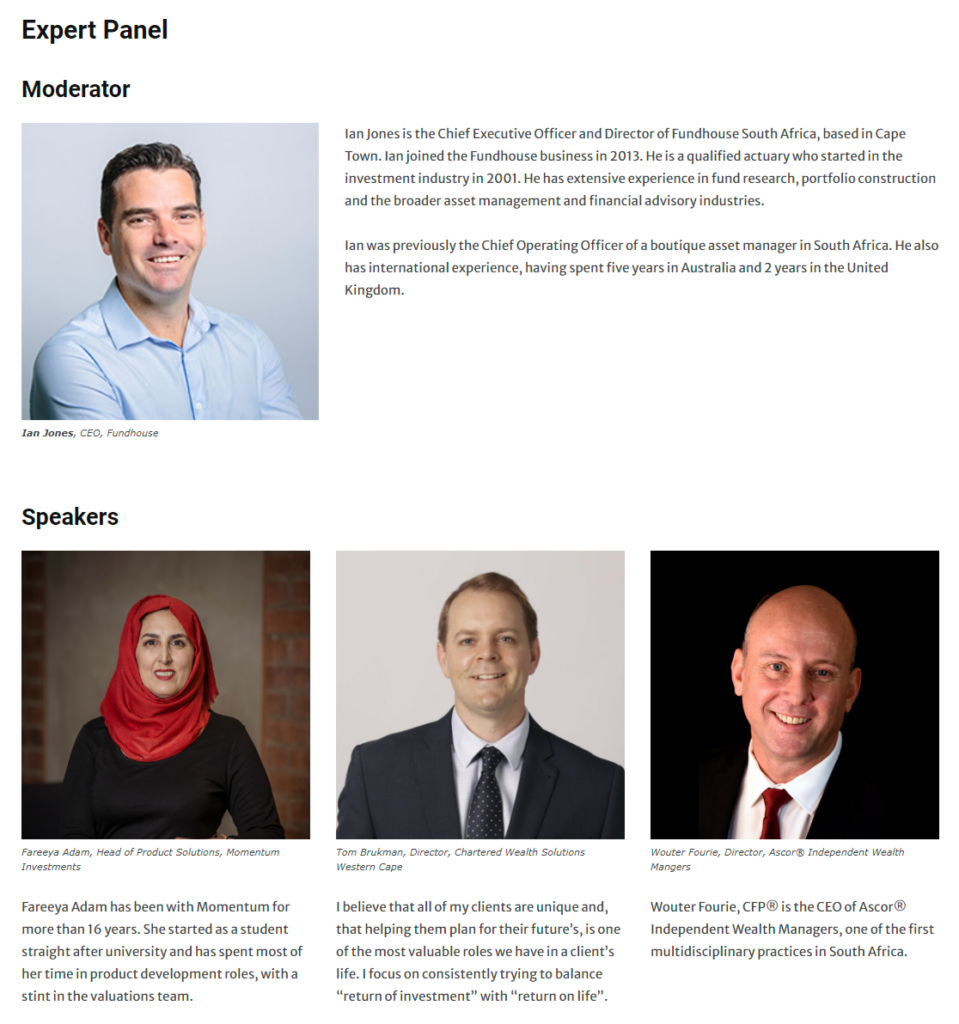

Join Blue Chip Digital for an exclusive round table discussion with four of the country’s top investment and financial planning professionals, focused on retirement planning and guiding clients to financial independence.


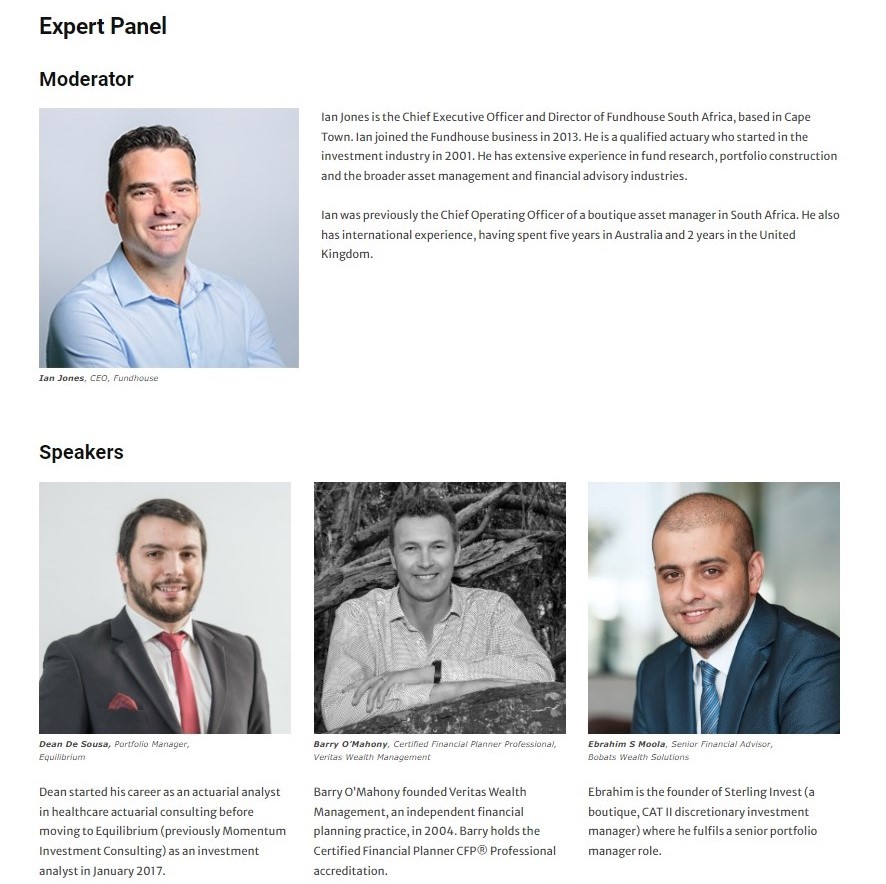

In 2010, a young woman named Adenike Ogunlesi had the vision to create something unique and meaningful for African children. She realized that most children’s clothing stores in Nigeria imported their products from other countries, so she created a brand that would be made in Nigeria. Today, her brand, Ruff ‘n’ Tumble, is a household name in Nigeria and has expanded to other African countries. Ogunlesi’s success story is an example of how crafting a unique African identity can lead to success in business.
Authenticity and Identity
Crafting a unique African brand identity requires businesses to be authentic to their roots. This means showcasing the diversity, culture, and heritage of the continent. According to a report by McKinsey, Africa’s cultural and creative industries have the potential to create millions of jobs and contribute billions of dollars to the economy. Businesses that tap into this potential can develop unique products and services that appeal to local and international markets.
Purpose and Impact
African brands need to have a purpose beyond profit to inspire and motivate consumers. They should have a mission to impact society and contribute to sustainable development positively. Consumers today are more conscious and prefer brands that align with their values. In fact, a study by Nielsen found that 66% of consumers globally are willing to pay more for sustainable products.
Visual Identity
Creating a visual identity that resonates with the target audience is essential for crafting a catchy name for your company. This includes designing a logo, colour scheme, and packaging that reflects the brand’s values and personality. An excellent example of a brand that has done this successfully is M-Pesa, a mobile money transfer service that originated in Kenya. M-Pesa’s iconic green logo and branding have become synonymous with the brand and have helped build consumer trust.
Name Creation
A brand’s name is one of the most critical elements in creating a unique identity. It should be memorable, pronounceable, and reflect the brand’s values and purpose. Some inspiring and motivating names for African startups include:
These names evoke a sense of purpose, empowerment, and innovation that can inspire and motivate consumers.
Brand Storytelling
Crafting a compelling brand story can help to connect with consumers on a deeper level. It should be authentic and emotional and reflect the brand’s values and purpose. An excellent example of a successful brand that has done this is the Nigerian brand Nuli Juice. Nuli Juice was founded by Ada Osakwe, who was inspired to create healthy and affordable juice options for Nigerians. The brand’s story resonates with consumers looking for healthy and affordable options and has helped build a loyal customer base..
Conclusion
Crafting a unique African identity is essential for brands that want to inspire and motivate consumers. It requires authenticity, purpose, a visual identity, a memorable name, and compelling storytelling. Adenike Ogunlesi’s success story with Ruff ‘n’ Tumble is a testament to the power of crafting a unique African identity. By following the strategies outlined in this article, African brands can create a unique identity that resonates with consumers and contributes to sustainable development.
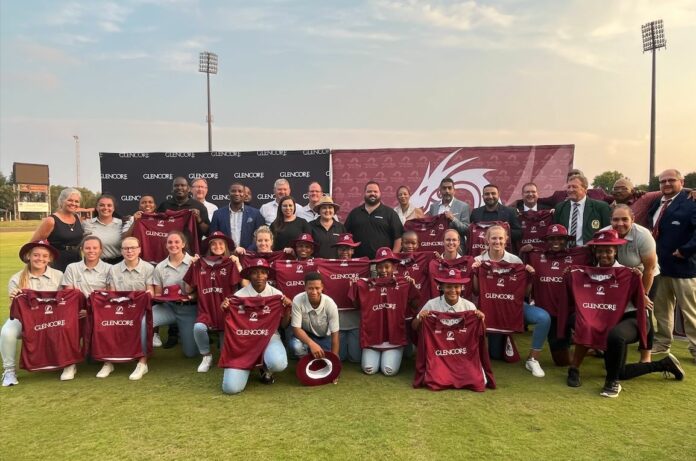
Glencore Ferroalloys’ Boshoek and Wonderkop Smelters partnered with North-West Cricket to support young, female local cricket players from the North-West Province.
Through the sponsorship, Glencore aims to expand and support advocacy for women’s sports in communities near their operations. The objective of the sponsorship reaffirms Glencore’s commitment to transformation through inclusivity and equality, fostering environments conducive to success in its workplace and communities.
The Boshoek and Wonderkop Smelters officially launched their title sponsorship and cricket jersey reveal at the JB Marks Oval in Potchefstroom on Tuesday, 21 March 2023. The day was spent cheering on South Africa in their match against the West Indies, and following South Africa’s thrilling victory, Glencore officially revealed the ‘Glencore Dragons’ as the new name of the sponsored women’s cricket team.
“Our partnership with North-West Cricket, which takes pride in supporting the Glencore Dragons, exemplifies Glencore’s commitment to ensuring that transformation and equality exists not only in mining but also in the communities in which we operate. The true value of this partnership lies in its ability to give women a platform to amplify their voices and break down gender barriers and discrimination through sport. We are honoured to be here today to support the Glencore Dragons; we are behind you all the way,” said Fatima Hayat, Human Resource Manager of Wonderkop Smelter.
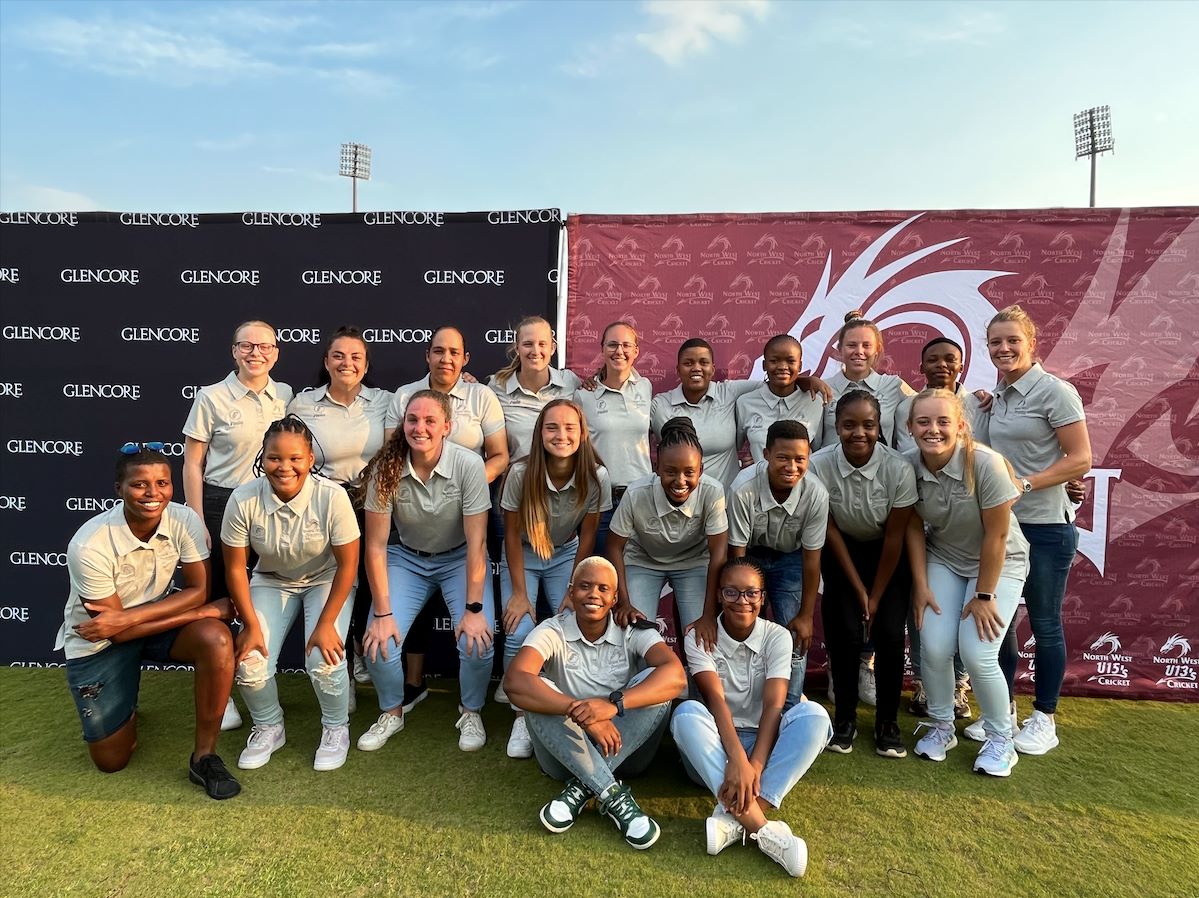
The sponsorship by the operations will cover all activities for the Glencore Dragons Women’s team to ensure they can focus on a successful cricket season.
The General Manager of Boshoek Smelter, Riaan Cilliers, congratulated the Glencore Dragons and encouraged them to continue to always focus on the end goal.
“This is the first step to investing in the development of women’s sports in our communities, and our hope for this partnership is to create long-term sustainability that will be successful for future generations to come. To the team, strive to make a difference wherever you go and always remember to remain humble, even as your career progresses. We are proud to be supporting such a talented team, and we look forward to seeing more of your accomplishments through investments like these,” said Cilliers.
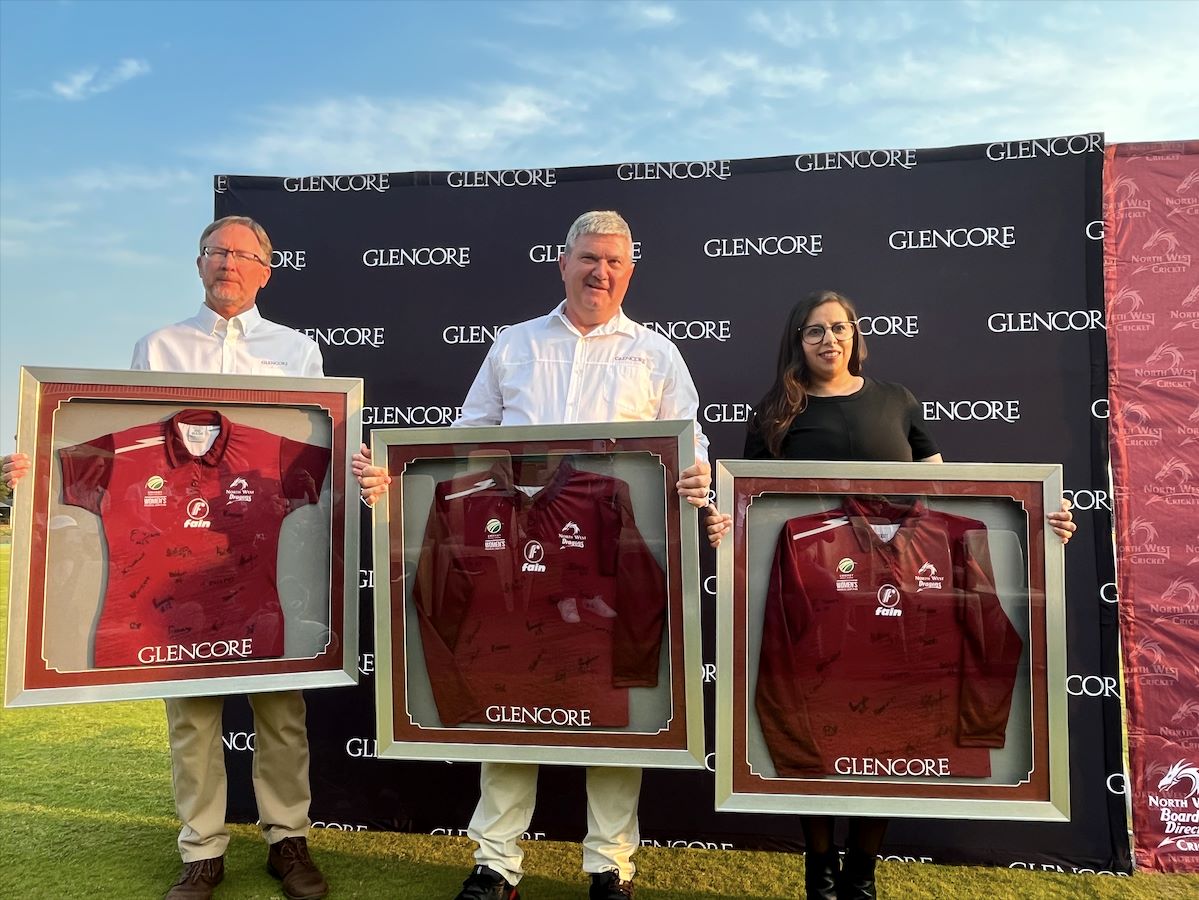
Supporting women’s sport in rural communities provides opportunities to effect social, economic, and environmental change, as well as contribute to sustainable development, social cohesion, and even challenge mind sets and prejudice in the sporting environment.
The Acting Chief Executive Officer for North-West Cricket, Ismail Minty, said, “We rejoice for our team, which will now be called the Glencore Dragons. That is indeed something to take pleasure in because it is a stamp of trust in the teams’ abilities. Women’s cricket has taken off, and partnerships like these reflect the efforts taken to make sure that it grows to new heights. Thank you, Glencore, we look forward to a fruitful partnership with you.”
The partnership officially kicked off on 21 March 2023 and will run for the rest of the cricket season through to 2024.

West Property, Zimbabwe’s leading property company, has been teasing its followers on social media with a promise of a big announcement.
The company has a track record of innovation and revolutionary ideas in the property industry and its latest hint has kept the country on edge, eagerly anticipating the unveiling of the mystery project.
West Property has been making waves in Zimbabwe’s property sector with its impressive portfolio of projects.
One of the company’s most notable developments is the recently announced Warren Hills Golf Estate which is about to usher in a new era of luxury living and eco-friendly innovation.
The mixed-use development construction is valued at $280-million and will feature a US PGA-standard golf course as well as a host of residential, hotel, sporting and medical amenities.
While the details of the project are yet to be revealed, the company has promised that it will be its most ambitious project yet.
West Property has also implemented technology in its developments including PropTech, which is the use of technology to enhance the real estate industry.
This technology is being implemented in West Property’s lifestyle communities to offer residents an array of benefits including digital security systems, mobile-controlled home automation, energy-efficient lighting, and renewable energy sources.
The company’s success is a testament to the organisation’s innovative approach to property development.
West Property has a reputation for pushing boundaries and challenging the status quo in the industry.
This is evidenced by its upcoming announcement, which one company executive in a shared video has referred to as its “biggest score ever”.
Messages such as: “This is going to be our most ambitious project yet and we can’t wait to have you part of the journey with us,” have been shared on their social media feed.
“There’s big things happening in the company, a big announcement to make, just not right now,” read one caption on their Facebook page.
While the details of the project are yet to be revealed, the company has promised that it will be its most ambitious project yet.
West property has called on its followers to join them on the journey, indicating that the project will involve more than just the company alone.
The announcement has sparked excitement and curiosity among Zimbabweans and industry players alike.
Many are eagerly awaiting the big reveal, which is expected to shake up the property industry in Zimbabwe and beyond.
The upcoming announcement promises to be a game-changer, and it will be interesting to see what the company has in store for Zimbabwe and the world.
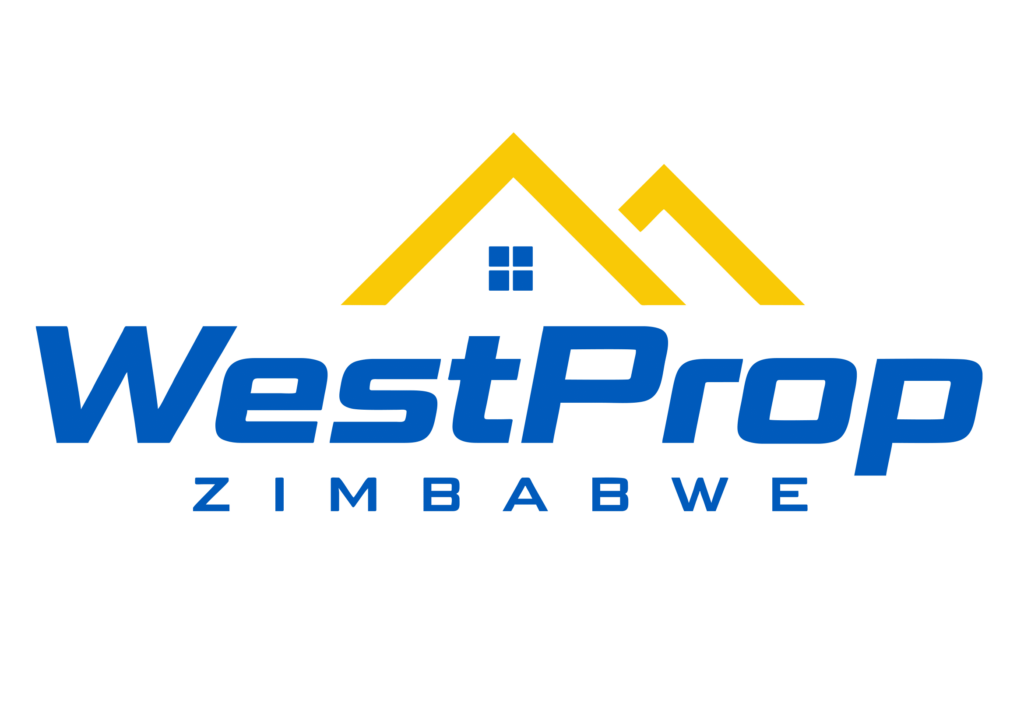
Tshwane South TVET College is a Public TVET College which falls under the auspices of the Department of Higher Education and Training. It was established as the result of a merger of three Technical Colleges namely Atteridgeville, Centurion and Pretoria West, emanating from Government Gazette-Provincial Gazette Extraordinary (7 Dec 2001).
In 2006 Tshwane South TVET College gained a fourth campus (Odi Campus) from Orbit TVET College in the North West Province, as a result of the rezoning of the provincial boarders. This arose from a rationalisation of TVET Colleges in which some 150 Colleges around the country were reduced to 50.
The College aspires to empower learners through high quality Vocational Education and Training, to ensure that learners achieve the future they desire and offers education and training programmes that prepare learners for the world of work. Tshwane South TVET College offers various support services to students including academic support, work-integrated to prepare learners with the qualifications and skills necessary to start on a preferred profession route.
The College offers a wide range of programmes, including National Certificate Vocational (NCV) on Level 2 to 4, Nated Report 191 on N1 to N6, National N Diploma, occupational programmes, short skills and other skills programmes, Learnerships, Artisan Related Learning Programmes (ARLP) and Trade testing.
The Gandhi Mandela Centre of Specialisation for Artisan Skills situated at Pretoria West Campus, supported by the Government of India and its state owned company HIML through a donation of state-of-the-art machinery and tools, offers training for Electricians, Boilermakers, Mechanical Fitters and Millwrights. The Fitter and Turner offered at Centurion Campus is supported by the Japanese International Cooperation Agency (JAICA) in the form of Soft Skills and Lecturer Capacitation.
All programmes offered in the institution lead to recognised, accredited qualifications that are in high demand in different industries.
Learn more, visit: https://tsc.edu.za/
Article by Zintle Maliwa,
Communication Officer: Marketing and Communications, Tshwane South TVET College
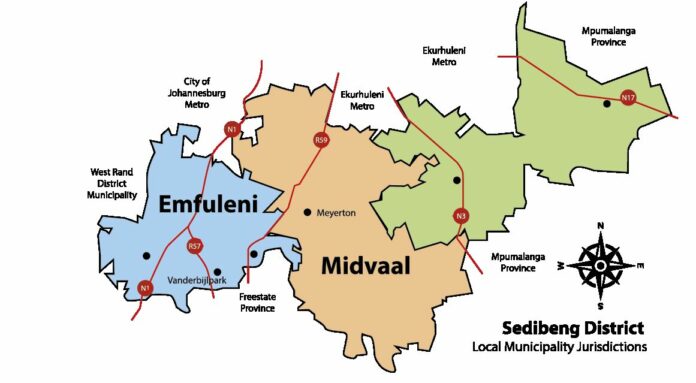
A considerable amount of planning has already gone into the concept which ties in to development goals and frameworks at local, regional and national level.
The three local municipalities which make up the Sedibeng District Municipality are predominantly rural.
Midvaal is the most rural of the three local municipalities, with urban development concentrated along routes R59 and R82 in the north-western parts of the municipal area. Midvaal has strong regional linkages to major economic cores.
Lesedi is also primarily rural, with the major urban concentration located in Heidelberg/Ratanda nodes, along the N3 freeway at its intersection with Provincial Route R42, east of the Suikerbosrand Nature Reserve.
Heidelberg is the seat of the municipality. Emfuleni in the west is home to the towns synonymous with steel, Vanderbijlpark and Vereeniging and the Sasol Petrochemical complex to the south of Sedibeng in the Free State Province.
By 2030, an industrialised, globally competitive, export-driven regional economy.
Our Mission is our tagline: To Reignite the Birthplace of Industrialisation in South Africa.
The Vaal SEZ Master Plan was completed at the end of June 2022. Site analyses of secured sites has been completed.
A pipeline of firm investment commitments is being established. Township establishment processes will be initiated for land parcels to service current high-priority investors.
The SEZ designation application [will be] submitted by the end of October 2022.
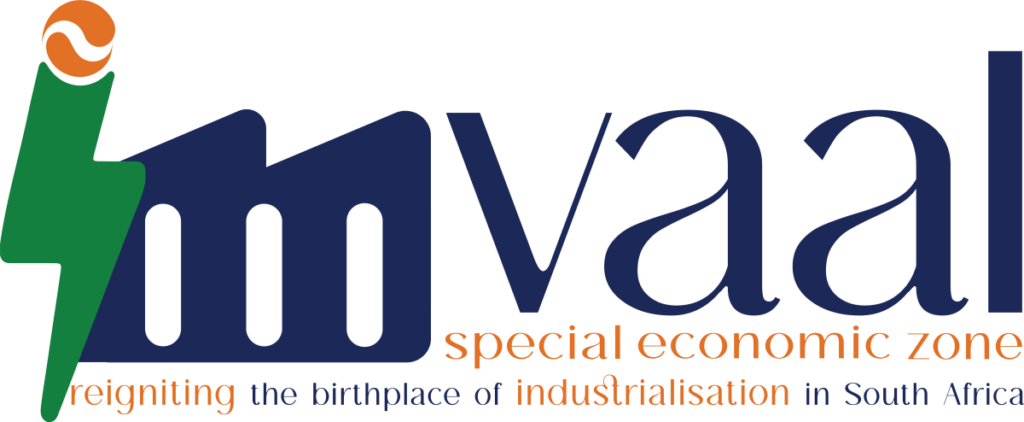
Sedibeng District Municipality is traversed by extensive national and provincial major railway and road mobility infrastructure:
Two land parcels earmarked by the municipality for SEZ development (one of 20ha and another of 149ha). Access to the N3 to allow good connections to Johannesburg and KwaZulu-Natal. Three-way collaboration between the Municipality, MTP Aviation Solutions and the Vaal SEZ to widen the SEZ area to include parts of the Heidelberg Aerodrome.
Land has been secured adjacent to the Klipriver Business Park (500ha) with access to the R59 via the R550. Also, 100ha secured next to SA Steel Mill off the Pierneef Road offramp, as well as 9 ha in DeDeur, zoned for agricultural purposes and earmarked for agro-procressing. Council has approved the land classification.
The Emfuleni Local Municipality Council has resolved to make two adjoining land parcels available, totalling 697ha.The site is bordered by the N1 highway and is close to the ArcelorMittal factory. This site is also earmarked for the development of a Hydrogen Valley Concept.
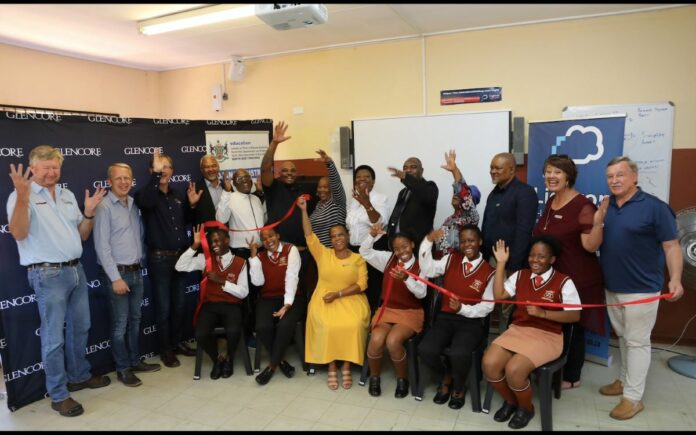
Mathematics and physical science are regarded as the two most crucial gateway subjects to take in high school as they can be key in setting up students for success, no matter which career path they choose.
However, in recent years there has been a decrease in the number of students who select these two subjects. In 2022, The Outlier reported that only one in three Grade 12 students wrote mathematics and only one in four wrote science in the 2021 National Senior Certificates Exams.
These are one of the many reasons that prompted Glencore Ferroalloys’ Boshoek Smelter operation, together with the Department of Education to introduce the Ligbron e-Learning System to local schools in and around Glencore operations in Boshoek and Macharora.
The Ligbron e-Learning System, which is the first in the North West Province, connects schools all over South Africa into an online learning network to live stream mathematics and science lessons using video conferencing and desktop sharing.
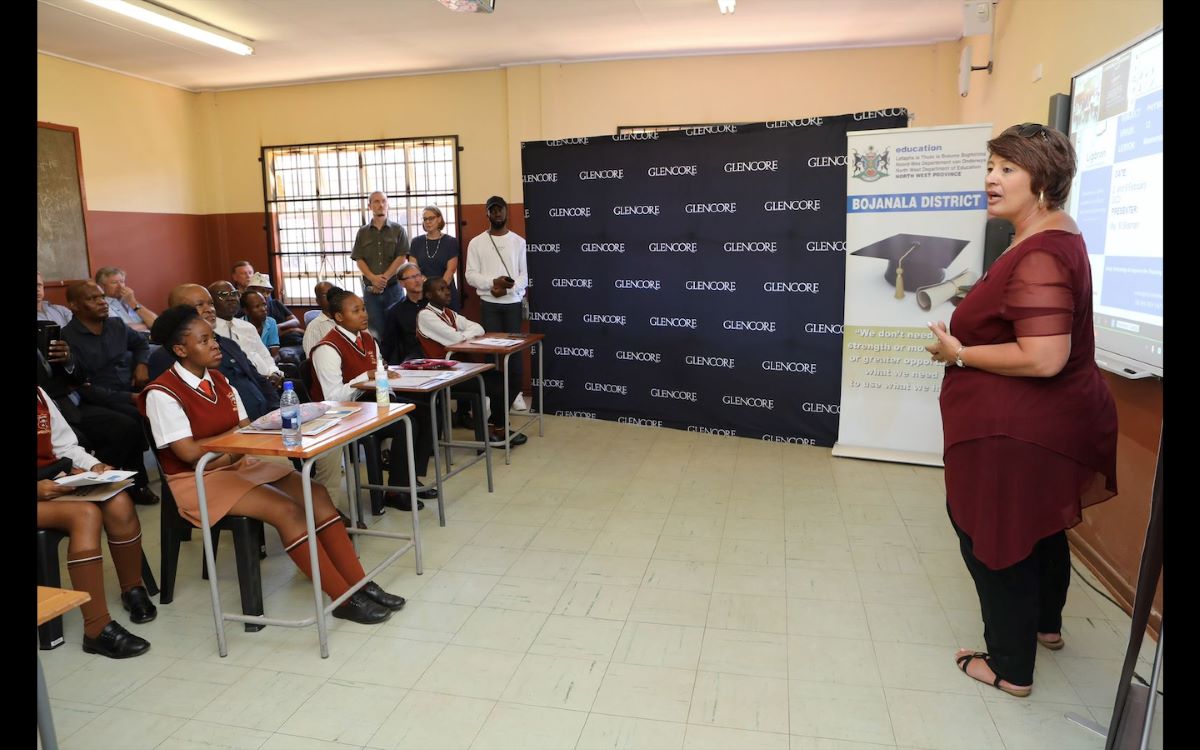
“We started this programme 14 years ago and are still happy to be standing here today with the same vision in mind, which is to invest in the future leaders of our country. Mathematics and science are challenging subjects, and the aim of our programme is to help learners no matter where they come from. It’s always rewarding to witness the excitement of learning these subjects return to each learner and teacher because they have been equipped with new ways of approaching and solving problems,” said Ligbron e-Learning System Project Manager, Natasia Marx.
In South Africa, mathematics is a compulsory subject, but learners can choose to do mathematical literacy, a practical alternative to pure mathematics. However, mathematical literacy is not accepted for most STEM (science, technology, engineering, and math) studies in tertiary institutions.
The Boshoek Smelter CSR and investment strategy is to focus on the areas of social and community development, infrastructure, education, health and wellness, school sports development, arts and culture as well as local business development initiatives. The Ligbron e-Learning System for mathematics and science is one of the various initiatives launched to support the advancement of education at Charora High School.
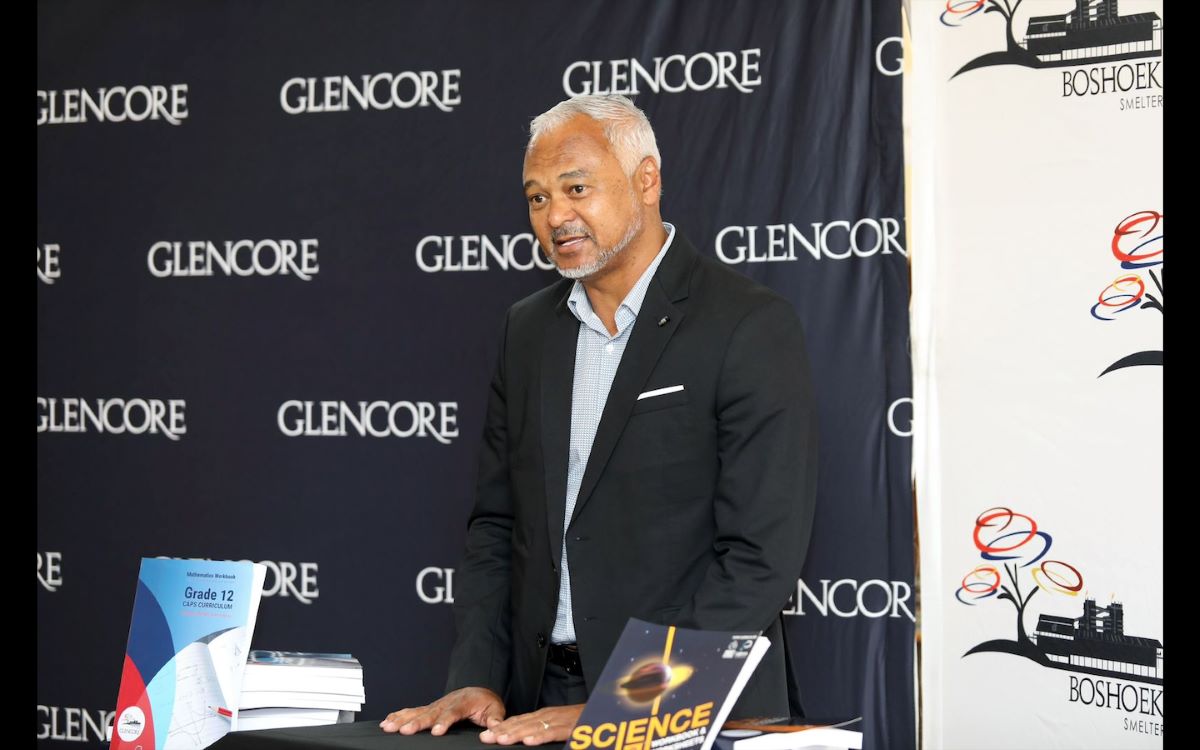
In addition, the smelter relies on various skill sets such as engineers or metallurgists to help reach its organisational goals, as such the focus for bursary selection is on students selecting STEM-related studies.
On Monday 27 February 2023, the smelter officially launched the Ligbron e-Learning System at one of its beneficiaries, Charora High School, which is situated in Robega Village near Rustenburg.
Glencore Ferroalloys’ Chief Community and Social Responsibility Officer, Conroy van der Westhuizen, encouraged the learners to embrace the subjects head-on and not let any negative views deter them from following their dreams.
“Education is something very close to me, and as a previous schoolteacher, I understand the importance of these two subjects. More importantly, I understand how, when one embraces certain subjects, they liberate learners, inspiring and paving the way for others. I am indeed proud to stand here today on behalf of an organisation that believes in investing in future generations, and if one child benefits from this programme, that means the lives of one family progress, which means our communities will progress too,” said van der Westhuizen.
The Ligbron e-Learning System continues to showcase its significant impact in various schools around South Africa, with one school in Mpumalanga growing from 19% to 85% matric pass rate.
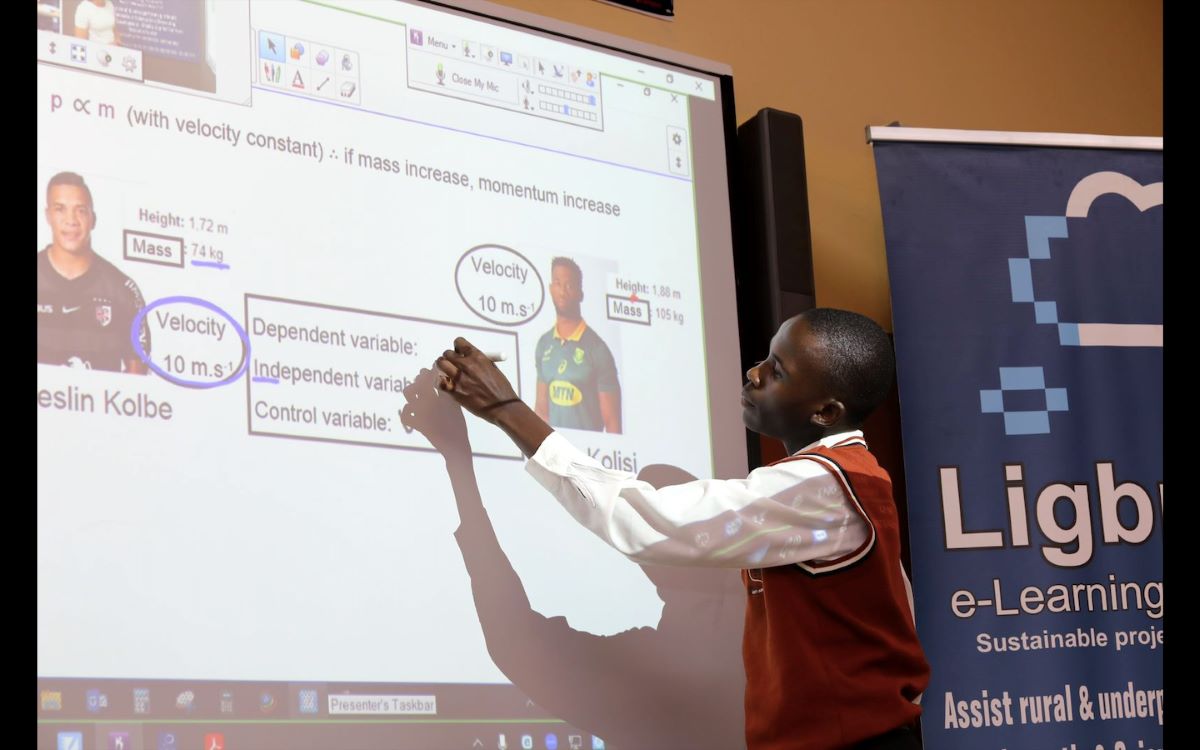
“We are so happy and eager to progress with our learning through this programme, as we have already attended a few classes. It has been so interesting to see a difference in our interpretation and understanding of the different mathematical problems. The encouragement from hearing a different voice, seeing different solutions, and approaching the questions in another light has been really motivating for me. Thank you Ligbron and Boshoek Smelter for giving us an opportunity to succeed,” said Khatliso Masiya, a Charora High School grade 12 learner.
Furthermore, through their scholarship programme, the smelter supports four learners from the school due to their excellent marks in mathematics and science. These learners are potential bursary applicants and investing in their abilities early on sets them up for success, which speaks to the smelter’s commitment to developing educational opportunities that will uplift its communities.
Glencore’s imperative to make strategic investments in its communities remains consistent, with a key focus on creating self-sustaining communities through each investment.

Leading luxury travel buyers, including Virtuoso and Select, will arrive in Cape Town at the end of March for ILTM Africa 2023. Impressively, 88% are new buyers with representation from Brazil, Canada, Finland, Israel, Nigeria, Singapore, Spain the United Arab Emirates and more.
“We are excited about the dramatic increase in new buyers, making up 88% of participants at ILTM this year. The event programme showcases some of the best Cape Town has to offer. To everyone coming to ILTM Africa this year – enjoy one of the great cities of the world, we love welcoming you again,” said Cape Town Mayor Geordin Hill-Lewis.
Held in Kirstenbosch National Botanical Gardens, this year’s ILTM Africa will once again bring high-value one-on-one meeting opportunities with king buyers from around the world. This beautiful natural venue is conducive for exceptional business meetings for the tourism industry. Situated on the eastern slopes of Table Mountain, Kirstenbosch is internationally acclaimed as one of the seven most magnificent botanical gardens in the world.
ILTM Africa delegates will be able to enjoy activities such as a picnic lunch in the Kirstenbosch Sculpture Gardens as well as chocolate tasting with Hippolytas chocolates, high tea at the Mount Nelson and a visit to The Vineyard Hotel in Newlands. An exclusive networking event powered by Shimansky and Zeitz MOCAA will also take place at the exclusive Zeitz MOCAA. There will be numerous spoils for delegates including beautiful gift bags supplied by The Joinery and exciting surprises organised by ILTM Africa.
“We’re so excited to be able to put together an amazing itinerary for delegates and media in the Host City of Cape Town. A special thank you as well to MLT Car Hire who will drive our hosted media to a range of attractions to showcase our beautiful region,” says Megan De Jager, RX Africa Portfolio Director: Travel, Tourism & Marketing.
Speakers on luxury travel trends and LGBTQ+ travel will be a key feature of the event. Almost 20% of the confirmed buyers are interested in the LGBTQ+ travel category and interest in Golf Tourism came from buyers in seven countries, including Singapore and Germany.
International Luxury Travel Market (ILTM) Africa is an exclusive annual event showcasing a curated selection of luxury travel and tourism providers in Africa to buyers from across the world. It is an invitation-only event and provides opportunities for leaders in the industry to network, expand their knowledge, gain insight and discover new business.
“ILTM Africa has gone back its roots. We are focussing on our core mission: to be a niche, boutique, invite only event where luxury tourism players can connect and exchange ideas. Our intimate event has incredible things planned for you alongside quality meetings – we cannot wait to share these with you!” concludes De Jager.
ILTM Africa will be held in Cape Town, South Africa from 31 March to 02 April.
This water awareness month, Coca-Cola Beverages South Africa (CCBSA) can celebrate significant progress it has made in helping South African communities to become more water resilient and meeting its own sustainability goals through water savings.
CCBSA has long recognised its responsibility to use water sustainably for its business, manufacturing processes, and its role in helping to improve South Africa’s water security.
The Coca-Cola Water Stewardship Strategy 2030 is based on the reasoning that water is the primary ingredient for the company but that it should not be used at the detriment of communities’ survival.
 CCBSA places a strong emphasis on supporting basic human rights, especially in relation to the United Nations’ Sustainability Development Goal 6 and the National Development Plan, both of which advocate for universal and equitable access to affordable drinking water for all, by 2030. This is particularly so for the vulnerable girl child and women, as the primary drawers of water in rural areas.
CCBSA places a strong emphasis on supporting basic human rights, especially in relation to the United Nations’ Sustainability Development Goal 6 and the National Development Plan, both of which advocate for universal and equitable access to affordable drinking water for all, by 2030. This is particularly so for the vulnerable girl child and women, as the primary drawers of water in rural areas.
“Water stewardship is not just about helping to create a better future for our country, but it is also about making the business stronger and more resilient,” said Nozicelo Ngcobo, CCBSA’s Public Affairs, Communication and Sustainability Director.
“By implementing water sustainability practices, we reduce costs, protect ourselves from operational disruptions resulting from insufficient water supplies, and maintain and strengthen our license to operate, amongst many other benefits,” Ngcobo added.
CCBSA has adopted a three-pronged water strategy which is focused on regenerative operations, healthy watersheds, and resilient communities.
Key initiatives include Project Lungisa in Grabouw in the Western Cape and drought assistance in Gqeberha in the Eastern Cape. Project Lungisa is a water-saving initiative between the Theewaterskloof Municipality and CCBSA, and is making a significant dent in water wastage in Grabouw, situated close to the Theewaterskloof dam, the largest dam in the Western Cape Water Supply System.
Watershed restoration and protection is aimed at addressing long term, sustainable and cost-effective water security through nature-based solutions such as clearing of alien invasive species, while enhanced community water resilience is focused on provision of clean access to water, sanitation and hygiene facilities, empowering women and girls, who are the most vulnerable in most communities in which CCBSA operates.
CCBSA rolled out its innovative Coke Ville sites in partnership with the Ministry of Water and Sanitation, as part of broad stakeholder collaboration to stave off Day Zero in the Nelson Mandela Bay Metro. Day Zero is when the metro’s taps literally run dry.
The Coke Ville project in Nelson Mandela Bay has a combined total of nine turnkey borehole systems, with a minimum annual potential of replenishing 90 million litres per annum at no cost to the residents of the communities in which they are located.
CCBSA has deployed the systems to the worst affected areas within the Nelson Mandela Bay Municipality, including Walmer, Lorraine and the Kariega area. There are plans to add six more systems in 2023 in the vulnerable metro. Launched in 2020 with three systems in Limpopo, the project has expanded to a total of 32 sites in Limpopo, Eastern Cape, Gauteng and KwaZulu-Natal. Each project is designed to provide these communities with 10-20 million litres of water annually. To date over 400 million litres have been distributed to over 25 000 households throughout the country.